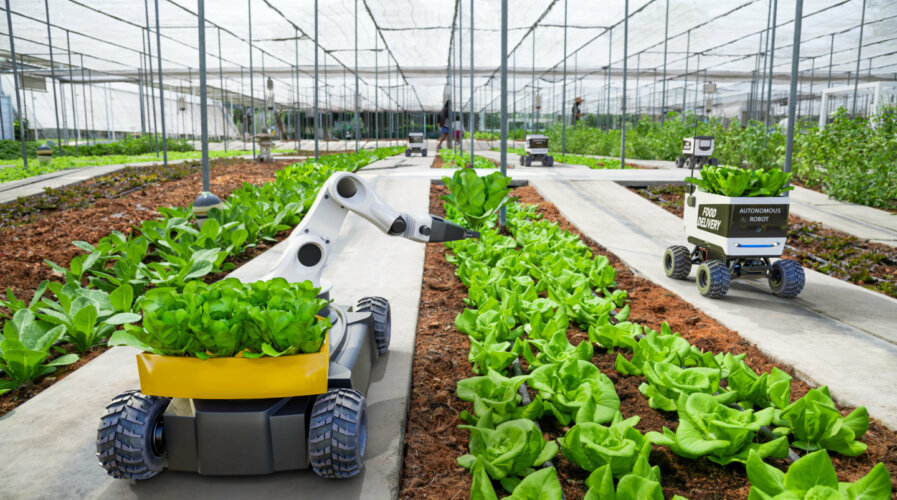by Karen Abrams, MBA, EdD ’25, AA
The global fight against poverty requires innovative approaches to enhance agricultural productivity and address the challenges posed by climate change and population growth. Developing nations have immense potential to alleviate poverty and improve livelihoods through the widespread adoption of agricultural technology.
According to a World Bank report (2021), smallholder farmers in developing nations face significant challenges such as increasing global population, ensuring livelihoods, and protecting the environment. While advancements in communication technology have facilitated improved access to markets, credit, and insurance for small farmers, traditional farming techniques remain prevalent, resulting in suboptimal productivity. To address this issue, policymakers must prioritize agricultural innovation and the adoption of cutting-edge technology to enhance output and productivity while ensuring user-friendliness for farmers.
A key factor contributing to the limited adoption of technology in agriculture is the significant disparity in research and development (R&D) investment. This disparity is evident in the fact that developed countries invest significantly more in agricultural R&D than developing countries. For example, in 2011, developed countries invested an average of 3.25% of their agricultural GDP in R&D, while developing countries invested an average of only 0.5%. This disparity in investment has several negative consequences for developing countries, including reduced agricultural productivity, increased food insecurity, and increased poverty. Insufficient funding, lack of infrastructure, brain drain, government’s unwillingness to create a level playing field for innovators, and political instability are among the reasons behind low R&D investment in developing countries.
One research study conducted in Tubah Sub-Division, North West Region of Cameroon, demonstrated the benefits of technology in poverty reduction. The study found that households that adopted agricultural technology had higher incomes and lower poverty levels than households that did not adopt agricultural technology. The study also found that households that adopted agricultural technology had higher agricultural productivity than households that did not adopt agricultural technology.
These findings suggest that agricultural technology adoption can be an effective way to reduce poverty in developing countries. However, the disparity in R&D investment between developed and developing countries means that developing countries often lack access to the latest agricultural technologies. This is a major barrier to poverty reduction in developing countries.
By embracing new technologies, farmers can increase yields, optimize resource utilization, experiment with innovative crops and production methods, and adapt to climate change. Cameroon, for example, heavily reliant on agriculture, faces challenges in meeting rising food demands, but the adoption of agricultural technology offers promising solutions.
According to the Akumbom, P., Egwu, M. J. B., & Shillie, P. N. (2023) research study conducted in the Tubah Sub-Division, agricultural technology adoption has a statistically significant impact on poverty reduction. To further enhance the adoption of technology and improve agricultural productivity, several policy recommendations emerge. Firstly, promoting the effective use of consumable inputs, such as weedicides and insect traps, through expert consulting services and farmer groups can increase awareness and affordability. Additionally, encouraging the use of machinery through group purchases or rentals, along with education and sensitization on machinery usage, can boost productivity and income.
Agricultural technology adoption holds immense potential for poverty reduction and sustainable development in developing nations. As farmers embrace innovative approaches, increase productivity, and improve livelihoods, the fight against poverty can gain momentum, ensuring food security, economic growth, and a better quality of life for rural communities.
Reference
Akumbom, P., Egwu, M. J. B., & Shillie, P. N. . (2023). Agricultural technology adoption, productivity, and poverty reduction in Cameroon: A mediating analysis. Journal of Enterprise and Development (JED), 5(2), 188–201. https://doi.org/10.20414/jed.v5i2.6839
